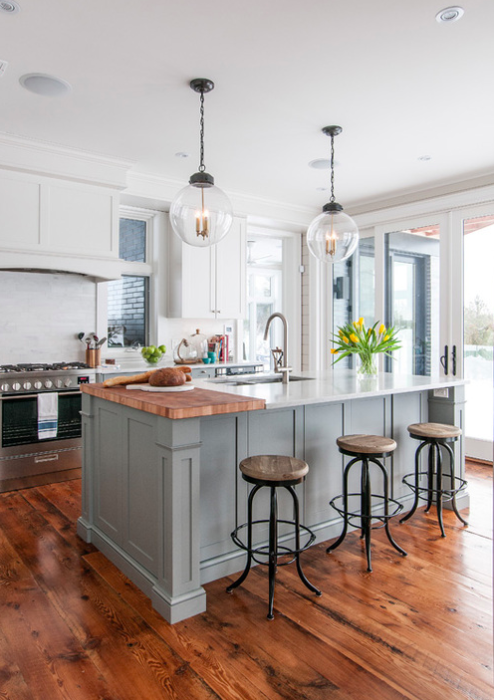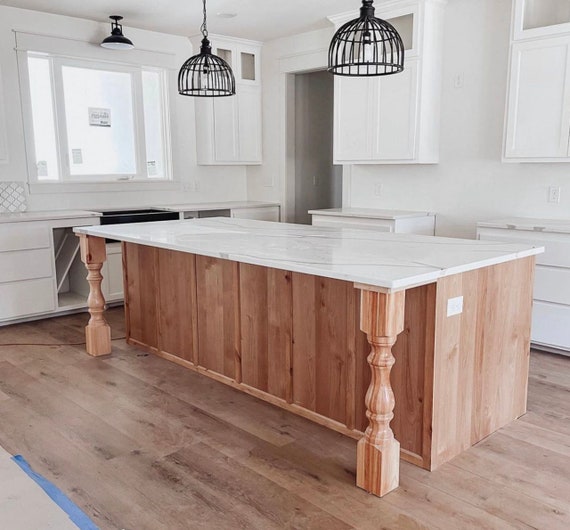Important Tips for Picking the Perfect Kitchen Island Leg for Your Home
Important Tips for Picking the Perfect Kitchen Island Leg for Your Home
Blog Article
Top Considerations When Picking a Kitchen Area Island Leg for Modern Kitchen Insides
In the world of modern cooking area insides, the option of a cooking area island leg is critical, influencing both aesthetics and performance. Secret considerations include the option of materials that integrate with contemporary design, along with the leg's security and support to make certain enduring performance. In addition, elevation and percentages need to be thoughtfully assessed to preserve a natural appearance. As these components link, they raise further concerns concerning just how to accomplish the ideal equilibrium in between design and functionality, leaving one to contemplate the effects of each decision on the overall kitchen experience.
Material Options
When it involves picking a cooking area island leg, material selections play a crucial function in both visual appeals and capability. kitchen island leg. The most usual materials consist of timber, metal, and composite alternatives, each offering distinctive advantages and prospective drawbacks
Timber is preferred for its warmth and traditional charm, offering an ageless look that matches numerous cooking area designs. It is extremely functional, permitting for personalization in regards to colors and coatings. Timber might require more maintenance to prevent warping or damages from moisture.
Metal, on the other hand, brings a commercial and modern-day style to kitchen area islands. Stainless steel and functioned iron are popular options, understood for their durability and resistance to use. They can withstand the rigors of daily usage but may lack the warmth connected with wood.
Composite products, such as crafted timber or synthetic blends, use an equilibrium between rate, longevity, and appearances. These alternatives are frequently made to imitate the look of natural products while offering resistance to spills and scratches.
Inevitably, the option of material ought to straighten with the overall kitchen layout and meant usage, ensuring that the kitchen island leg is both useful and visually attractive.
Design and Design
The style and design of a kitchen area island leg considerably contribute to the total aesthetic of the area, matching the picked material. When picking the leg design, think about the building design of the cooking area. Sleek, minimal legs made of stainless steel or acrylic harmonize with contemporary styles, while ornate, turned wood legs improve standard or farmhouse looks.
Additionally, the coating of the leg can affect the aesthetic effect; a sleek chrome or matte black surface may stimulate modern sophistication, while distressed timber talks with rustic charm. The leg's form additionally plays a vital duty-- directly, angular forms convey a more commercial feel, whereas curved or tapered legs present a softer, a lot more inviting look.
Incorporating ornamental components, such as embellishments or carvings, can add personality and personality to the kitchen island, more boosting its duty as a prime focus. Ultimately, the selected leg style must not just straighten with the total kitchen design yet also reflect the house owner's individual preference, guaranteeing that the cooking area island becomes a functional and unified focal point within the modern-day cooking area interior.
Elevation and Proportions
Accomplishing the ideal height and proportions for a kitchen island leg is critical for both functionality and aesthetics. Kitchen islands normally vary in height from 28 to 36 inches, depending on their meant use-- whether as a food preparation surface area, dining area, or office. Standard countertop elevation is approximately 36 inches, making it vital that the legs you pick complement this elevation to offer a smooth, incorporated appearance.
Percentages likewise play an essential duty in the aesthetic equilibrium of the cooking area. The dimension and weight of the leg must agree with the total layout of the island - kitchen island leg. A slim leg might be suitable for a minimalistic or contemporary island, while a much more substantial leg may be needed for rustic or conventional designs. Additionally, think about the spacing in between the legs; adequate range makes certain comfort and simplicity of movement around the island.
When selecting the height and percentages of the kitchen web area island leg, keep in mind the overall design motif of your kitchen area. This focus to information not only enhances the performance of the space but additionally adds to a aesthetically attractive and cohesive interior decoration.
Stability and Support
Consistently guaranteeing stability and assistance in kitchen area island legs is vital for both safety and capability. A well-constructed cooking area island have to stand up to daily usage, including weight from appliances, food preparations, and social gatherings. The choice of legs should prioritize robust products and styles that can provide sufficient support.
When assessing stability, think about the leg's material-- hardwood, steel, or aluminum commonly offer superior strength contrasted to lighter options. Additionally, the layout must include a broad base to disperse weight equally and reduce the danger of tipping or tottering. Legs created with an A-frame or cross-bracing can considerably boost stability.

Incorporating these considerations will not just enhance the total safety of the cooking area room however also boost the durability and performance of the kitchen area island, making it a valuable centerpiece in contemporary cooking area interiors.
Ending Up Touches
When it comes to completing a kitchen area island, thoughtful completing touches can considerably improve both its aesthetic charm and performance. Selecting the right leg design is important, yet complementing it with proper information can transform the entire area. Think about including decorative components such as toe kicks or baseboards that match the kitchen cabinetry or flooring to produce a smooth appearance.

A natural color scheme and product more tips here selection will boost the kitchen area island, making it a captivating focal factor. By paying attention to these completing touches, house owners can produce a kitchen area island that is both stunning and practical, catering to their way directory of life and design choices.
Conclusion

In the world of contemporary kitchen insides, the selection of a kitchen island leg is pivotal, affecting both visual appeals and functionality.The design and style of a kitchen island leg considerably contribute to the total aesthetic of the space, matching the selected material.Attaining the appropriate elevation and percentages for a kitchen area island leg is critical for both capability and aesthetics.Regularly making sure stability and support in cooking area island legs is crucial for both safety and performance.In recap, picking a kitchen island leg for modern-day interiors requires cautious consideration of material choices, design style, elevation, proportions, and stability.
Report this page